 Reviewed by
Anton Giuroiu
Reviewed by
Anton Giuroiu
Using acoustic foam panels, along with adding extra soundproofing material and sealing the perimeter is one of the most effective ways to prevent noise from traveling through the garage door. Besides, acoustic blankets, noise-blocking curtains, and mass-vinyl barriers are dependable options to make your garage a quiet space.
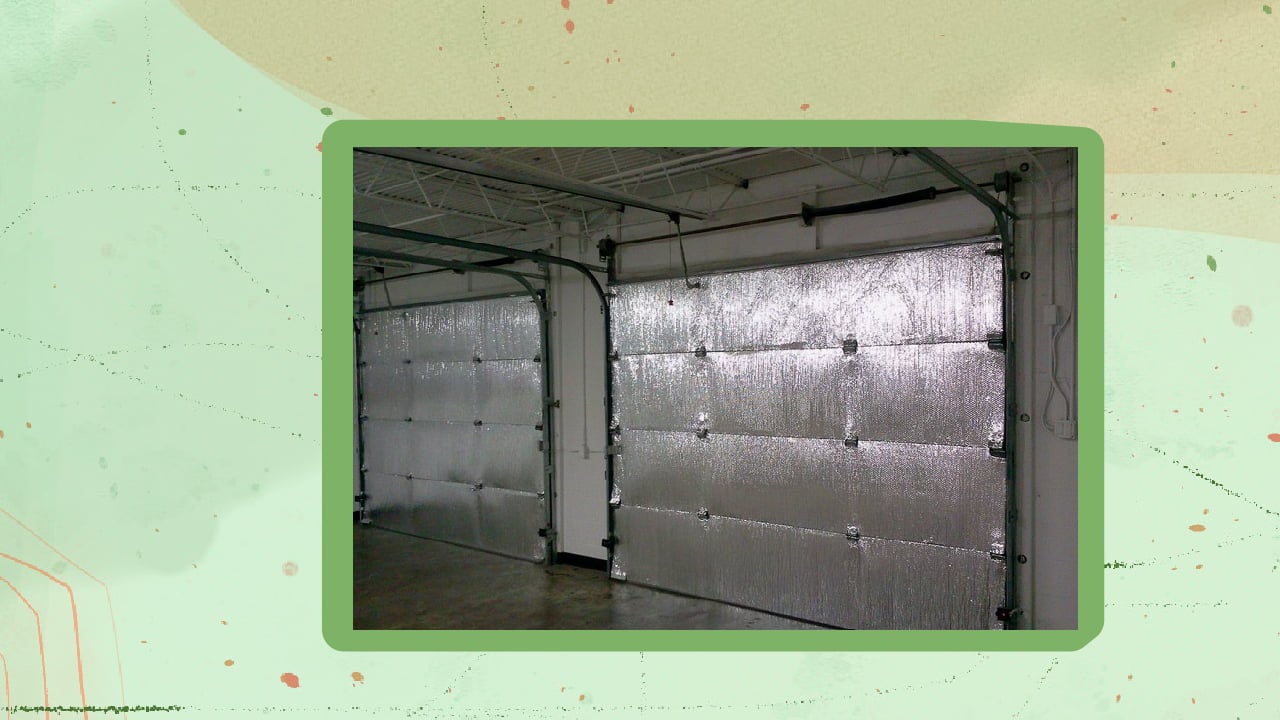
A garage is one of the most versatile locations in any home, be it for jamming with friends or getting some me-time.
You can even use it as a workshop for your DIY projects. Whatever the case, a soundproof garage is what you need to tinker away without disturbing others. Today, I’ll share the five best soundproofing materials that prevent noise from entering or escaping the garage.
So, keep reading!
Reasons To Soundproof Garage Door
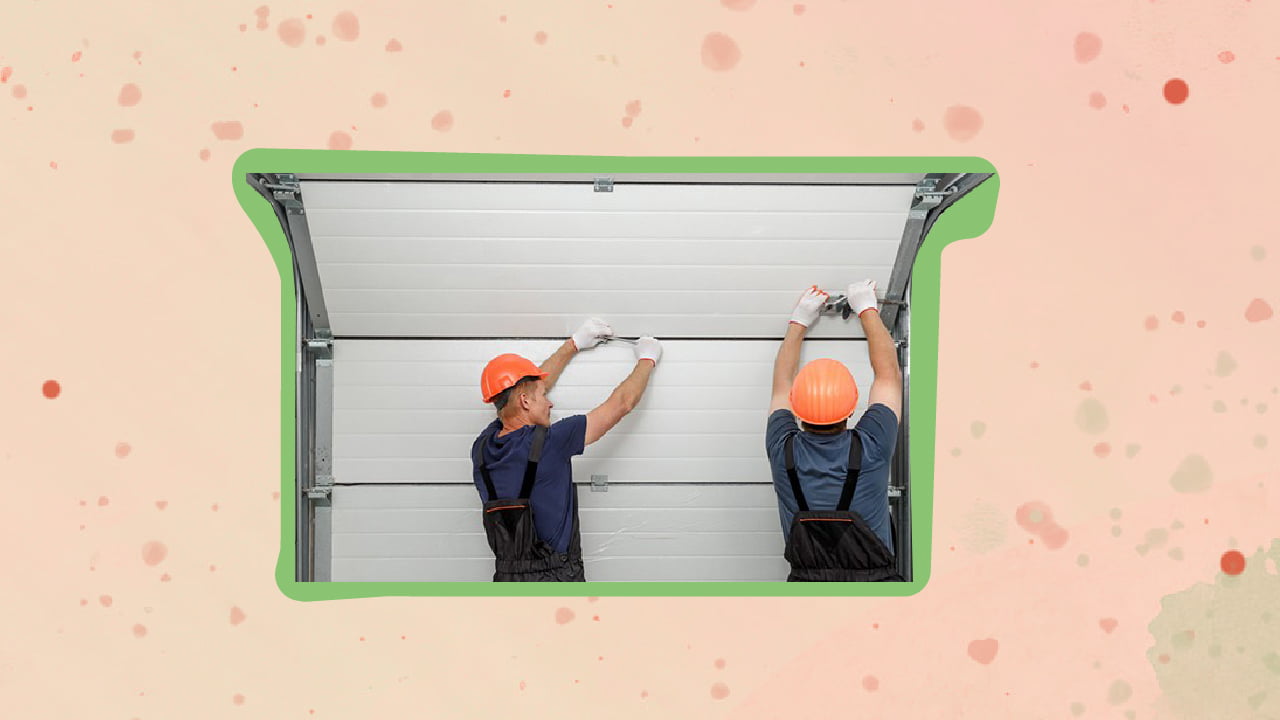
The primary reasons why every homeowner must consider soundproofing garage doors are as follows:
- Preventing noise from traveling out of the garage
- Minimizing the amount of noise that enters the garage
For instance, you might use the garage for band rehearsals or as a workshop for completing DIY projects. In either case, you will want to reduce the amount of sound that enters the space and work with as little distraction as possible.
In such situations, soundproofing your garage door would be wise, as it will minimize noise transmission.
Not only will it improve sound absorption (acoustics), but it will also prevent hot or cold air from entering(or escaping) the garage. Therefore, adding soundproofing materials in your garage will prevent heat loss, so you will save some money on energy bills every month.
Types Of Sound That Enter The Garage
Before kickstarting your garage soundproofing project, it’s important to figure out the type of sound that invades your garage space. That’s because the soundproofing material you must use depends largely on the sound that enters your garage.
Basically, two types of sound can enter your garage space– structure-borne noise and airborne noise. I’ve discussed them in detail– so let’s take a look.
1. Structure-Borne Noise
Also known as impact or structural noise, structure-borne noise transpires when any item collides with a solid structure, i.e., the garage door. This collision, in turn, results in vibrations, which are heard as noise.
The sound of rain thumping against the roofing and someone banging on the garage door is a classic example of structure-borne garage noise.
2. Airborne Noise
As the name suggests, airborne noise travels in and out of your garage via air. Sounds such as that of power tools, music, and voices are some examples of airborne noise that gets transmitted through your garage door.
So, is the noise in your garage airborne or structure-borne? One easy way to figure that out is by putting your hand on the garage door whenever you hear a noise in your garage.
If the noise is accompanied by a vibration, it’s structure-borne; however, in the absence of a vibration, the sound is airborne.
How To Soundproof A Garage Door
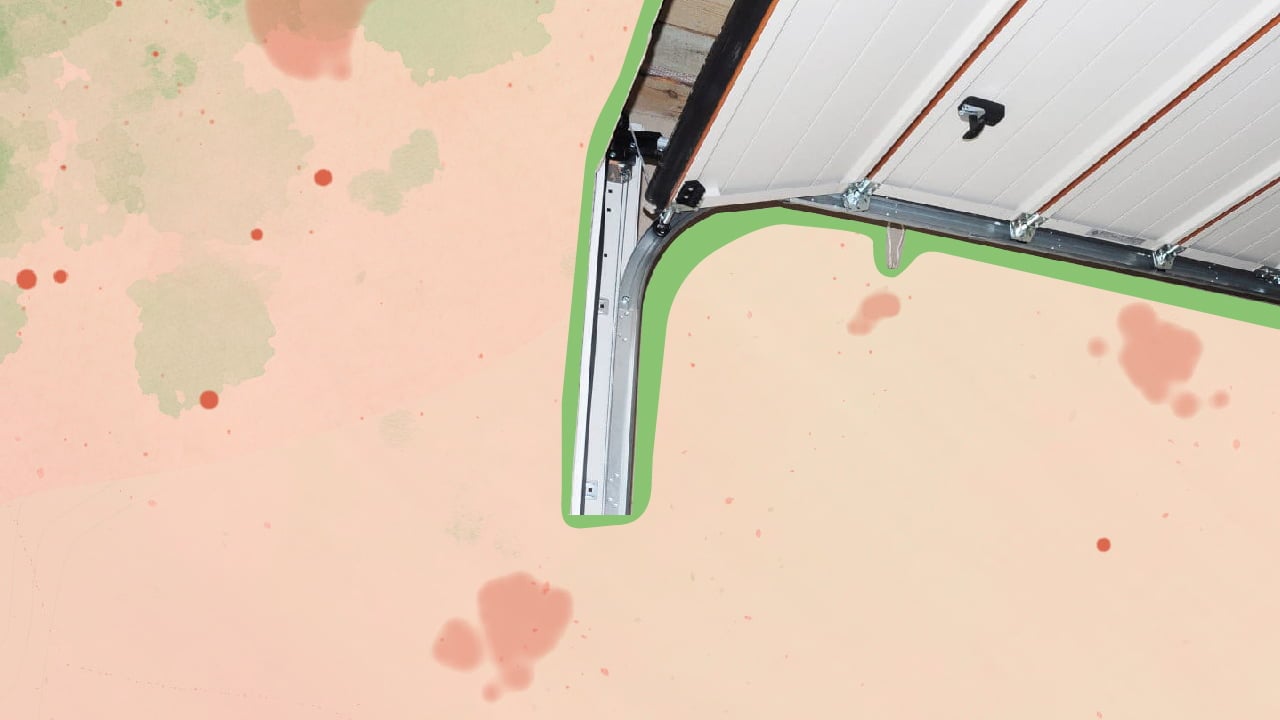
1. Install Acoustic Foam Panels
One of the most effective yet slightly expensive sound attenuation methods is to install acoustic panels in your garage. Unlike acoustic blankets, foam panels offer a polished appearance, making your garage appear more like a recording studio.
Installing acoustic foam panels is fairly easy, although you can hire a professional if you’re not into DIY. Adhesive spray, push pins, impaling clips, or double-sided tapes– you can use a variety of things to install acoustic panels on garage walls, doors, or the ceiling.
Note that if you intend to pull down the acoustic panels anytime soon, going for a less permanent installation method would be the best way forward. For maximum sound isolation, you can use these soundproofing foam panels to insulate the window pane and doors alongside the walls.
Do remember that these would only work when used in conjunction with an effective soundproofing system, with lots of additional mass applied to the entire surface.
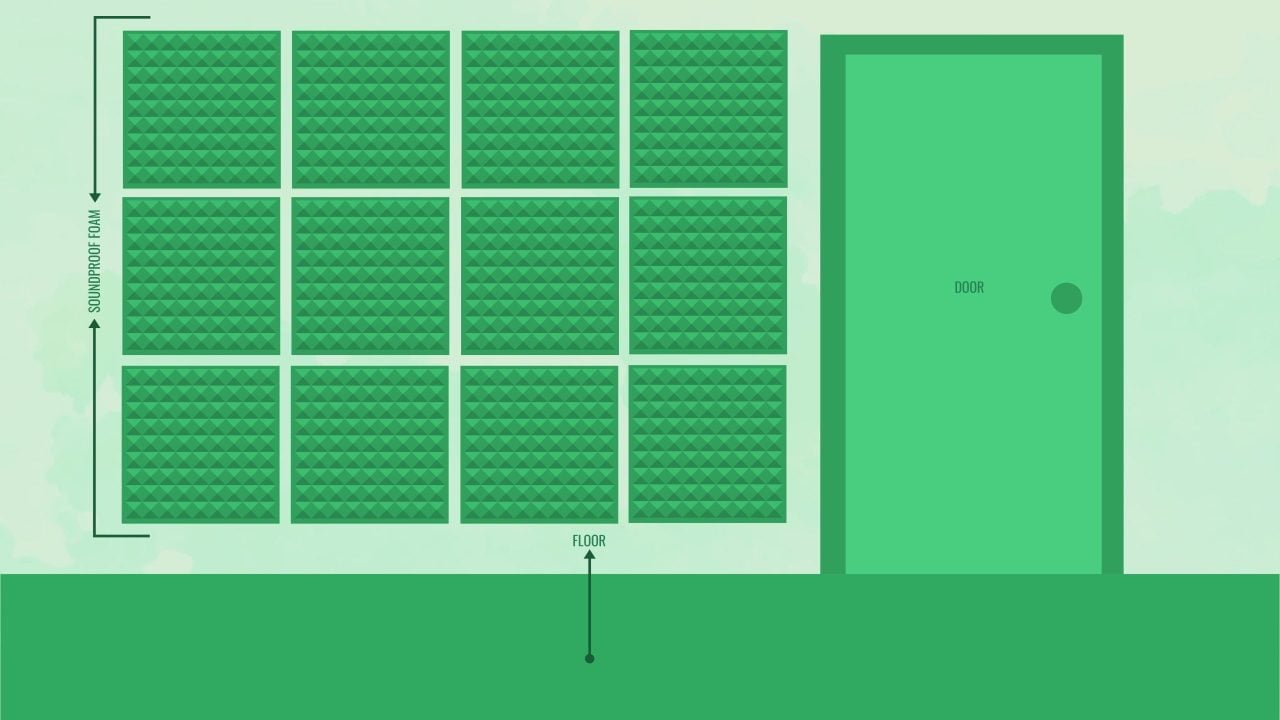
2. Use Acoustic Blankets For Soundproofing Your Roll-Up Garage Door
Acoustic blankets are a practical solution for soundproofing roll-up garage doors because they are affordable alternatives to acoustic panels.
More or less, acoustic blankets are 78 inches in length and 72 inches in width and come with reinforced metal grommets for easy installation. What makes them a reliable soundproofing material for noise reduction is that they absorb sound. So, neither would unwanted noise enter the garage nor would the garage door screech or rumble while opening or closing.
For better sound absorption, hang the blankets after folding them, which would prove effective in reducing noise transmission.
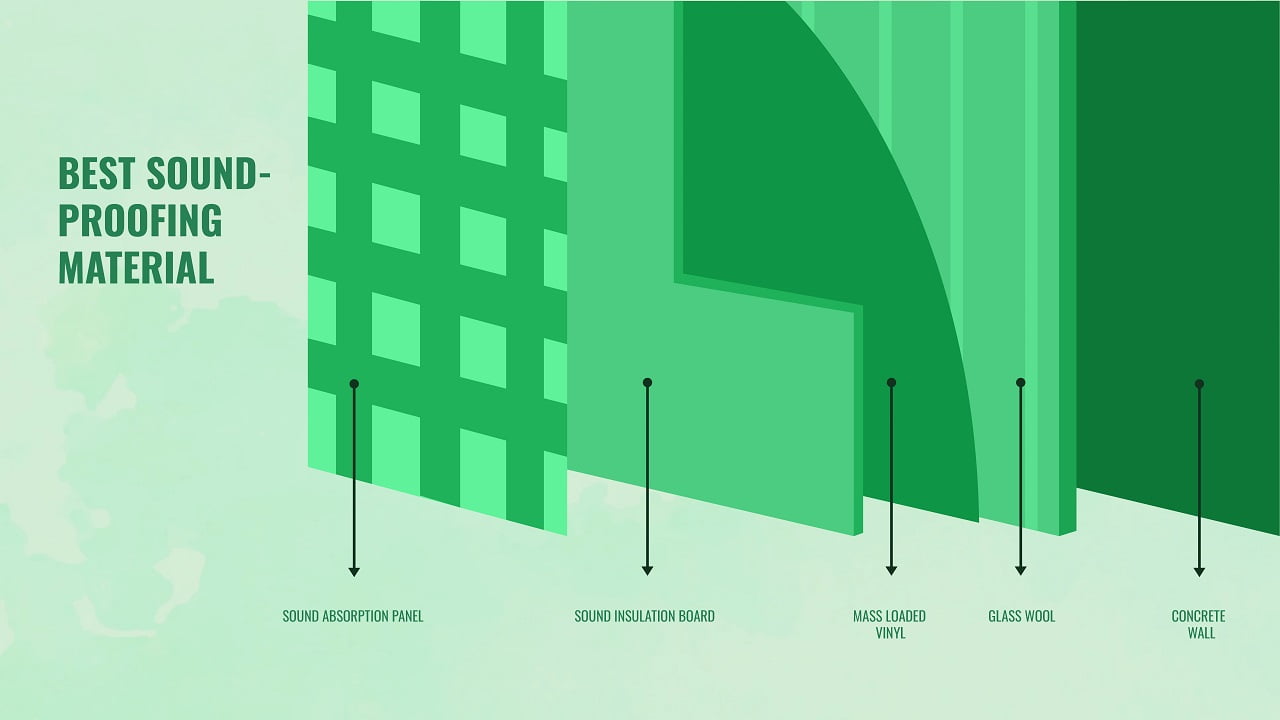
3. Insulate Your Garage Door With Mass-Loaded Vinyl
Another popular option for soundproofing garage doors is mass-loaded vinyl which is known to improve the STC (Sound Transmission Class) rating of a wall. This flexible material attenuates excess noise, so it’s a practical option for noise control.
The mass-loaded vinyl barrier, a polyvinyl chloride-based product, is an easy-to-install material that can be adhered to the wall, floor, or garage ceiling using spray adhesives, nails, and screws. To make your garage a quiet space, you can use more than one layer, which would enhance sound isolation.
Not many know that mass-loaded vinyl absorbs sounds of all frequencies, making it a reliable pick for garages where band practice takes place.
4. Use Noise-Blocking Curtains
Sure, an insulated garage door blocks noise, but did you know it also offers thermal insulation?
If you’re looking for a soundproofing material that offers both thermal and sound insulation, noise-blocking curtains are worth considering. As against a regular curtain, a noise-blocking curtain is thick and dense, which is why it can be installed anywhere– surrounding walls, windows, or doors.
Unlike other soundproofing materials, they need not be attached to the wall using any adhesive or nail (fastener); instead, you’ll need a curtain rod to install them. All you need to do is slide the metal grommets in the curtain rods, and your garage will be soundproof within a few minutes.
Like blankets, noise-blocking curtains don’t do much to reduce bass noise, so keep that in mind. However, it makes the space comfortable as it prevents energy loss, so you’ll be able to work comfortably no matter the weather outside.

5. Get Rid Of Air Vents Or Create An Air Vent Sound Maze
Ever thought that air vents could lead to noise leaks besides letting in the fresh air?
Tackling air vents is the first and the most important thing when it comes to soundproofing projects; otherwise, all your efforts would go in vain. Here, as a homeowner, you’ve got two choices– get rid of air vents or create an air vent sound maze.
Getting rid of them is one of the easiest ways to soundproof your garage. But without air vents, your garage would be toasty, which would be problematic in summer.
One way to combat this issue is to install an air conditioner or oscillating fans in your workspace to keep it cool.
If you don’t mind undertaking a bit of DIY task, creating an air vent sound maze will help you soundproof your garage efficiently. All you need is acoustic foam and wooden sticks for the task.
First, you will have to trim the acoustic foam such that it’s of the same length and width as the wooden stick. Thin sticks aren’t much help in noise reduction, so make sure you use thick ones. Once trimmed, you will have to arrange them as shown in the diagram below, which will prevent sound from invading.

A Step-By-Step Guide On Soundproofing A Garage Door
The benefits of an insulated garage door are plenty. For anyone who wishes to soundproof their garage door on their own, here’s a step-by-step guide to help you complete the project with ease.
1. Gather Supplies
The first thing is to gather supplies needed to soundproof a garage door; having the right tools and equipment will allow you to complete the project quickly and efficiently. You need:
- Sound insulation material like fiberglass panels, sound-deadening blankets, spray foam or acoustic foam panels
- Weatherstripping tape
- Spray or Green Glue adhesive
- Garage door seal kit
- Measuring tape
- Cutting tool
- Nails or fasteners
- Garage door motor lubricant
2. Lubricate The Garage Door Components
After gathering supplies, lubricating the garage door motor is the next thing to do. Take the garage door motor lubricant and spray it over the motor along with the opening and closing mechanisms for smooth working.
3. Measure Your Garage Door And Cut The Soundproofing Material
Measuring the length and width of garage doors is crucial for garage soundproofing projects. So, grab the measuring tape, measure the door and keep the measurements handy because you’ll have to cut soundproofing materials accordingly.
No matter which material you intend to use, mark the length and width on it with a pencil and then start cutting to avoid mistakes.
4. Install The Insulation
When the material is cut, it’s time to install it, so apply Green Glue all over the garage door in generous quantities. You will have to apply the adhesive only if you plan to install MLV or acoustic panels. For fiberglass panels, you can use nails, screws, or other adhesives.
Also, make sure to clean the door before applying adhesive because a dirty door would prevent the material from adhering to the surface.
Tip
To seal gaps on the bottom of the door, you’ll have to use weatherstripping tape. Conversely, a garage door seal kit is considered effective for sealing the top and the sides of the garage door. Besides soundproofing, it will keep the garage insulated from outside weather, meaning you’ll save money on energy bills.
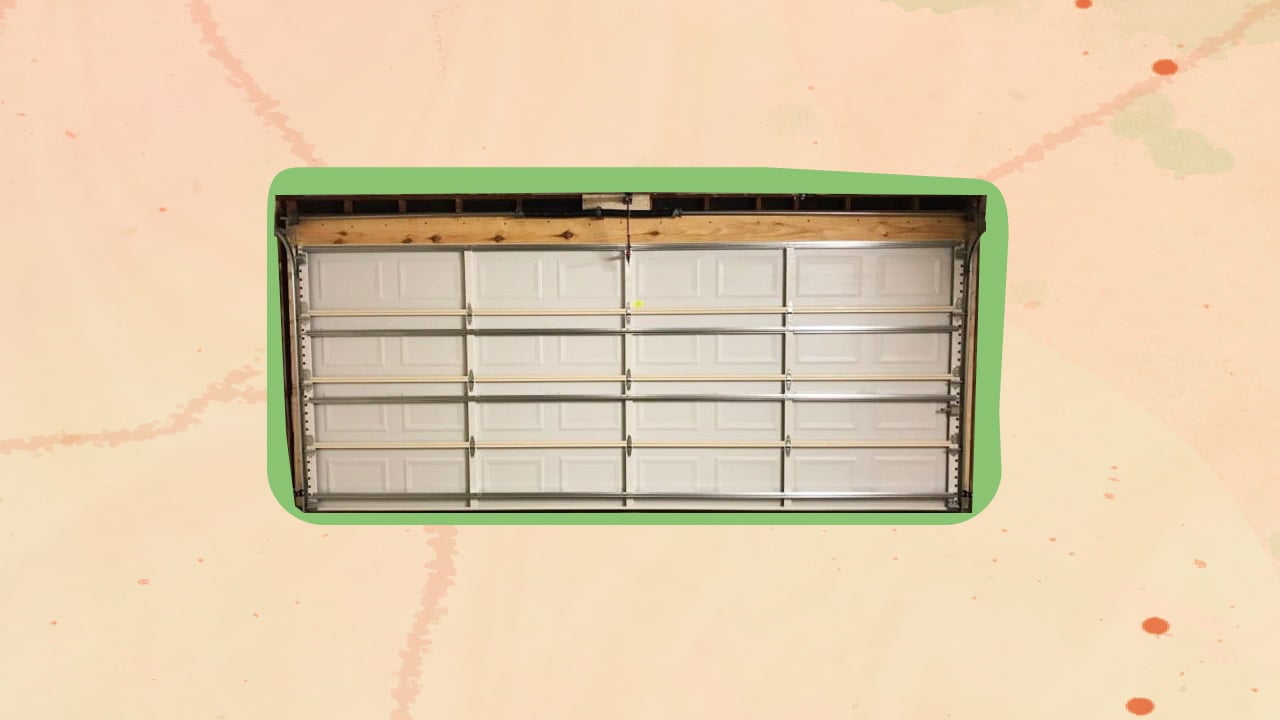
How To Soundproof A Garage Door Summing It Up
So, do you want to work peacefully on your carpentry projects in your garage, or does your garage make loud noises when opening or closing?
Either way, the only thing that can help you is soundproofing your garage doors. Of all the soundproofing materials, acoustic panels are effective in noise control, but they are slightly on the expensive side.
So, if you’re looking for materials to soundproof your side-to-side or roll-up garage door on a reasonable budget, acoustic blankets or noise-blocking curtains would certainly fit the bill.
Once soundproofed, you’re free to start your projects without the fear of getting noise complaints. However, if worst comes to worst, replacing your existing garage door with a ready-insulated one would be a wise thing to do.
Good luck, folks!
